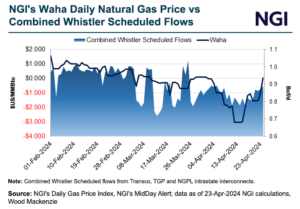With updated forecasts still pointing to a return to more seasonal winter weather by late January following exceptional warmth to start 2023, natural gas futures eked out modest gains in early trading Wednesday.
The February Nymex contract was up 9.1 cents to $3.730/MMBtu at around 8:50 a.m. ET.
Recent price action, with the February contract recording lows of $3.546 in Tuesday’s session and $3.559 in after hours trading, points to technical support in the $3.50 area, EBW Analytics Group analyst Eli Rubin said.
Weather-wise, recent forecasts as of early Wednesday modestly increased degree day expectations for the Jan. 20-26 storage period, suggesting a pattern shift from “scorching warmth” in the near term toward a “less extreme bearish setup” later this month,...



